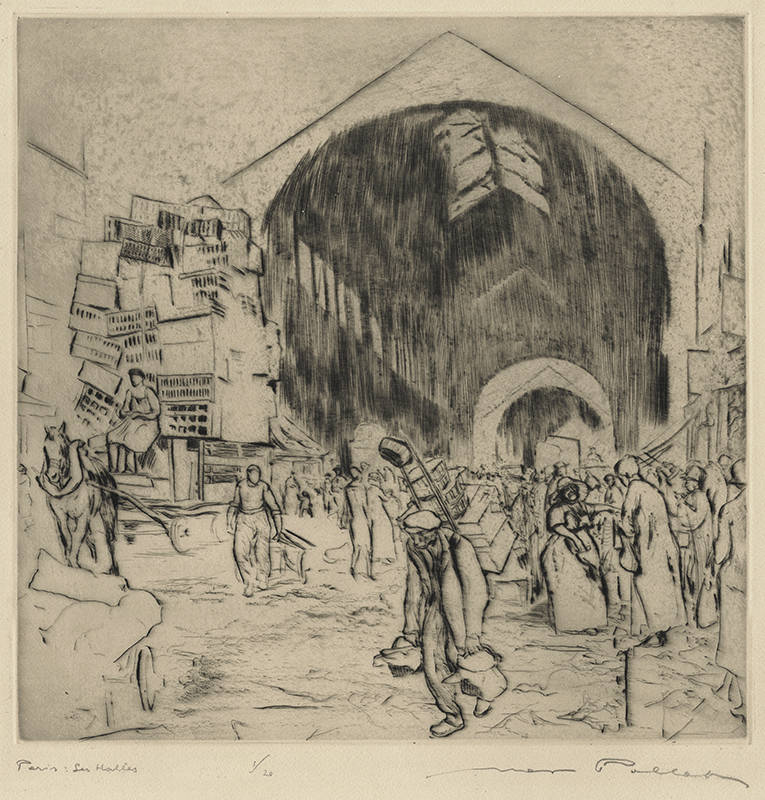
19th, 20th & 21st Century Fine Prints
707-546-7352 · fax 707-546-7924 · web: www.annexgalleries.com · email: artannex@aol.com
Paris: Les Halles by Max Pollak

Paris: Les Halles
Max Pollak
Paris: Les Halles
Max Pollak
1886 - 1970 (biography)Les Halles (known as the Belly of Paris) was the commercial heart of Paris. Les Halles was situated in the middle of Paris and was originally the central wholesale marketplace where farmers and other vendors brought their products to sell. This marketplace supplied Paris for 800 years before it was torn down in 1971.
The marketplace consisted of twelve high-ceiling pavilions of an avant-garde architecture constructed between 1854 and 1866. The glass and cast-iron pavilions were designed by the architect Victor Baltard. There were separate pavilions for meat, fish, dairy and vegetables. The volume of business was staggering and this success led to the downfall of Les Halles. With so many people traveling into the heart of Paris to shop at this central marketplace, bottlenecks became a major problem and the site was earmarked for destruction in the 1960s.
Author Emile Zola closely described this anthill of human activity in his 1873 realistic novel Le Ventre de Paris (The Belly of Paris).
Max Pollak, painter and printmaker, was born in Prague, Czechoslovakia in 1886. He was raised in Vienna, Austria and, in 1902, he entered the Vienna Academy of Art where he studied under William Unger and Ferdinand Schmutzer. In 1912, Pollak traveled to Italy, France, and Holland to study and paint. During the First World War, he was appointed painter of the Austrian Army.
He immigrated to the United States in 1927, living for a time on the east coast where he produced a series of color aquatints of New York, Cincinnati, and Detroit. His first exhibition was at the 57th Street Art Gallery in New York and he was commissioned by Theodore Dreiser in 1929 to illustrate his book, My City. In 1938, Pollak and his wife, Friedl, moved to San Francisco, California. Pollak was inspired by his new city and its environs and produced beautiful views of San Francisco Bay Area. Later travels included trips to Mexico and Guatemala.
Max Pollak died in Sausalito, California in 1970.
